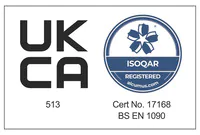We reuse structural steel more often than you might imagine. Everything from scaffolding, to temporary stages for outdoor concerts, to travelling fairgrounds, all rely on the ability to assemble structural steel over and over again.
This means that we are in the lucky position of having a long track record of safely reusing structural steel, which makes it easier to do so in other settings now as part of environmental commitments and cost-cutting.
SCI, the Steel Construction Institute, even publish a Steel Reuse Protocol, outlining best practice when reusing structural steel without recycling or reprocessing it.
What to consider when reusing structural steel
The SCI guidance recommends testing or making “certain conservative assumptions” to ensure that second-hand steel can be used with confidence.
But it adds that there is only one modification necessary for designs using second-hand structural steel, which is to use a buckling resistance value of 1.15.
In the Steel Reuse Protocol, SCI say: “The environmental advantages of reusing reclaimed structural steel are considerable, compared to the common practice of recycling by re-melting scrap. There are also potential cost savings.”
Working with second-hand structural steel
Second-hand steel can be assembled just like any other steel. If the structure is going to be temporary, such as a stage for a touring concert or theatre production, then temporary fixings such as bolts should be used, which can be disassembled easily.
James Dunkerley Steels offer drilling, sawing and flame cutting, so that we can trim your steel sections to size and add the necessary holes for easy assembly.
Our light fabrication services can also help by pre-assembling some of the steel structures, allowing them to be lifted into place intact to further reduce construction time on-site.
How to preserve reused structural steel
Reused steel can be protected in all the usual ways, and it’s worth checking for any bare steel exposed to the air if assembling the steel in a different configuration.
Painting is an option for small exposed areas, and galvanising with a sacrificial layer like zinc is a good way to protect larger structural steel sections.
If you would like to know more about protecting reused steel, please contact James Dunkerley Steels and we will be happy to discuss the methods suitable for your steel.


